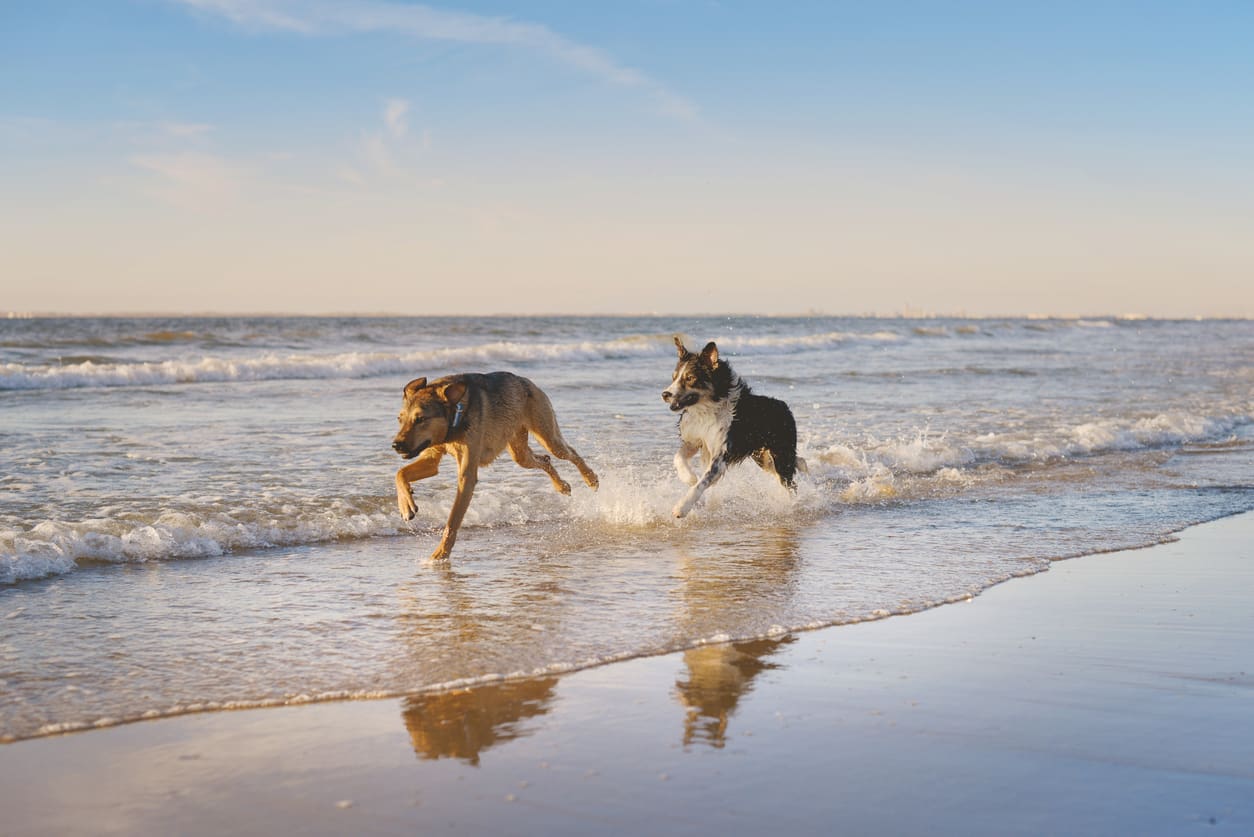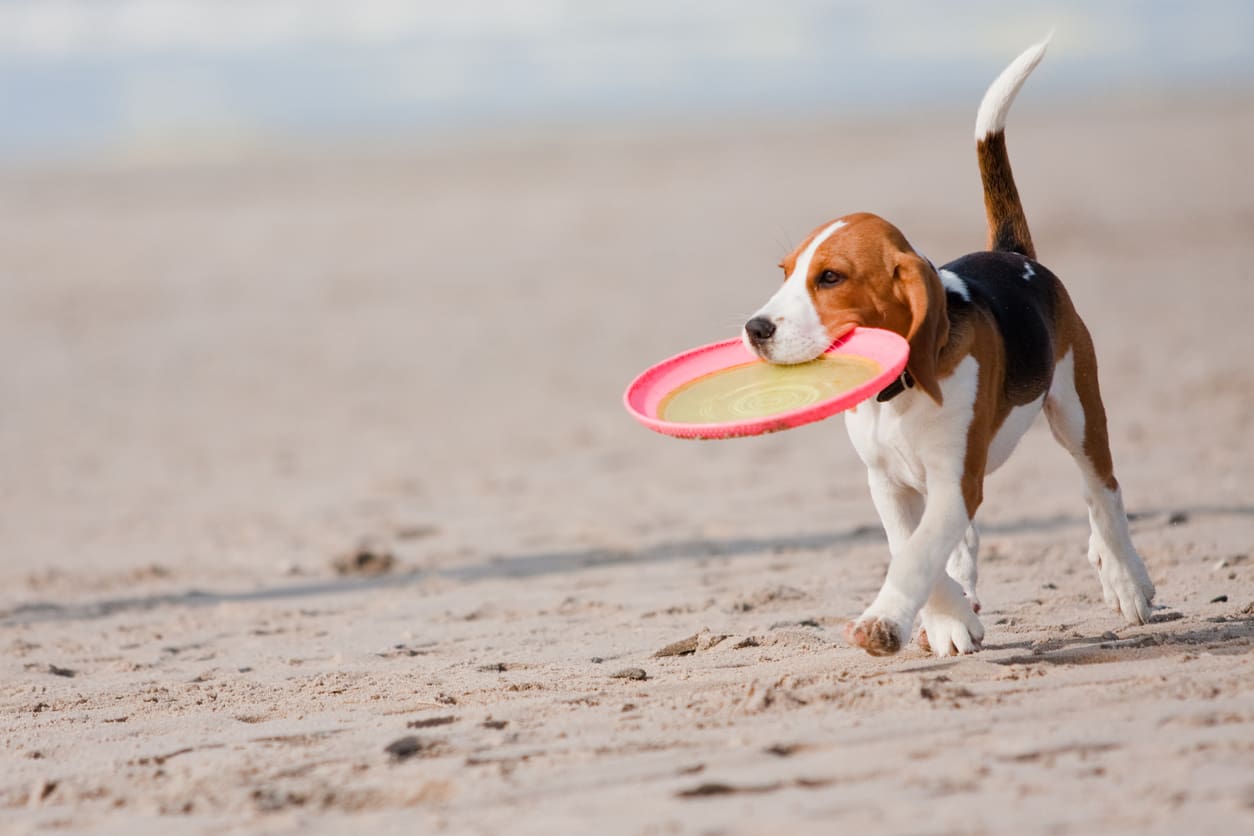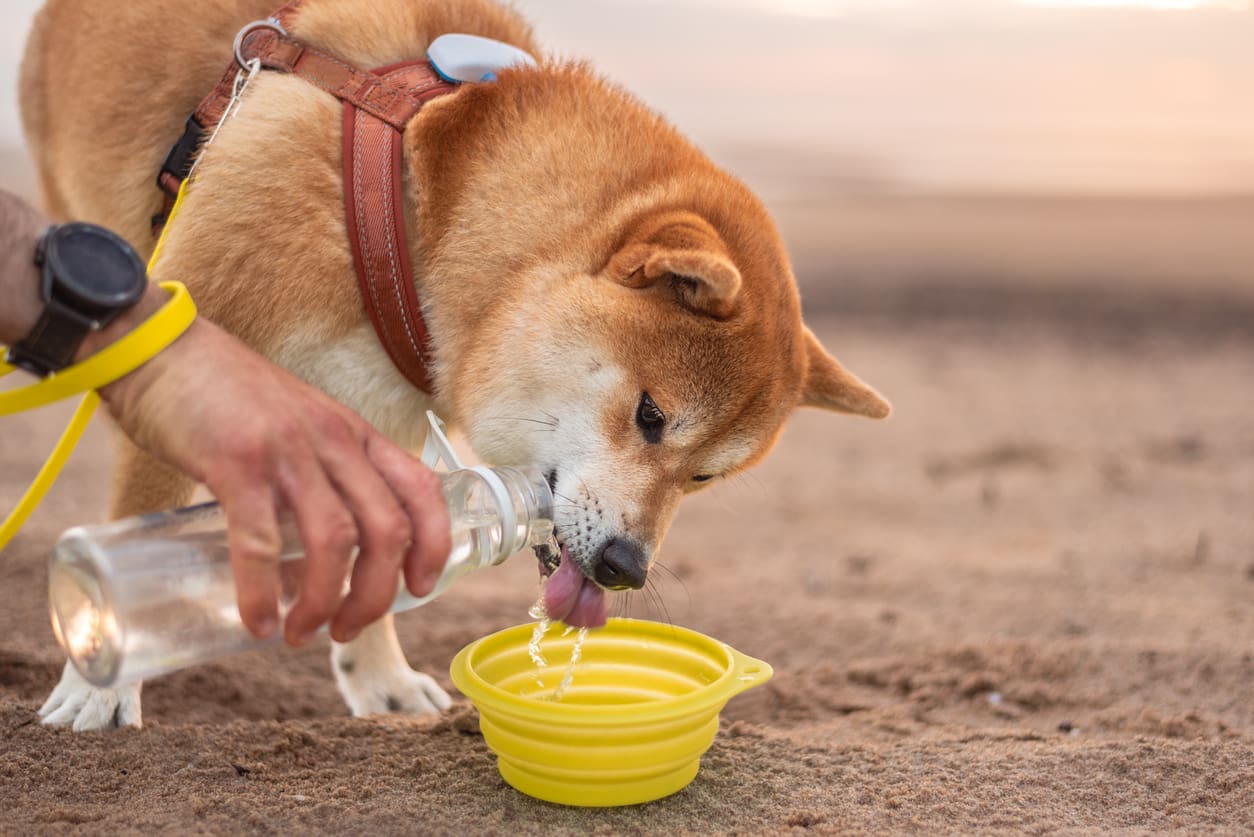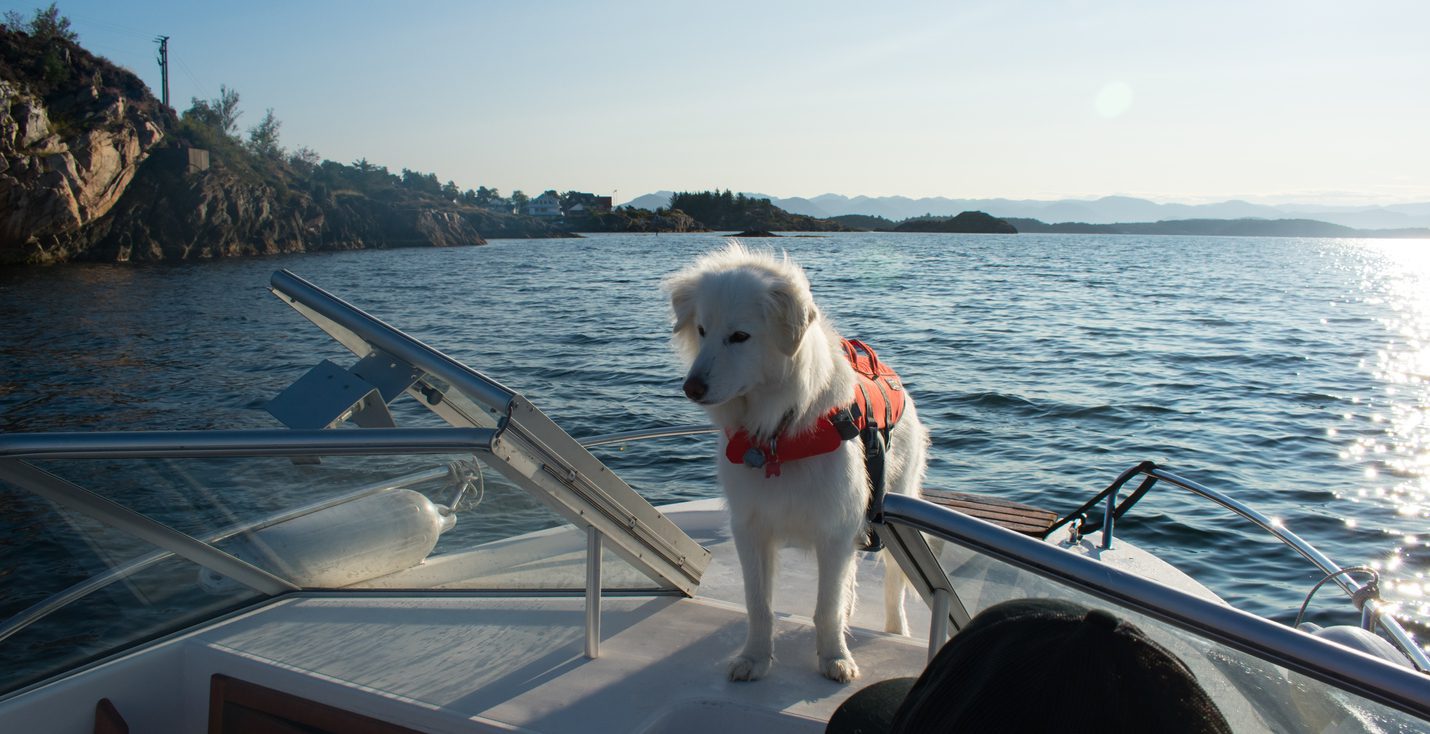Planning a beach trip with your pup? Visiting the beach on a weekday morning can help you and your dog avoid crowds, making the experience safer and more enjoyable. A dog-friendly sandy beach can be a dream destination—open skies, crashing waves, and endless play opportunities, fetch, chasing waves, or long walks along the water’s edge. However, it also comes with potential risks that every dog owner should know. Whether you’re a seasoned beachgoer or considering taking your dog for the first time, following key dog beach safety tips will help you and your furry friend enjoy the day worry-free.
Planning a Dog-Friendly Beach Trip

A successful beach trip with your furry friend starts long before you hit the sand. Begin by researching dog-friendly beaches in your area and reviewing local rules to ensure dogs are allowed and to understand any restrictions, such as leash laws or designated dog areas. Not all beaches are created equal—some are better suited for strong swimmers, while others offer more shade for dogs with sparse fur. Consider your dog’s breed, size, and energy level when choosing the perfect spot.
Pack plenty of fresh water to keep your dog hydrated and a life jacket if your pup isn’t a confident swimmer or if you’ll be near deeper ocean water. A beach umbrella is a must for providing shade and protecting your dog from the sun, especially on hot days. Planning helps you avoid potential beach hazards like saltwater poisoning and ensures a safe, fun experience for you and your dog. With the proper preparation, your beach trip will be a highlight for you and your best friend.
Can Dogs Swim in Saltwater Safely?

Can dogs swim in saltwater safely? Generally, yes—many dogs love it! At the beach, a dog loves digging in the sand, swimming, or chasing waves. However, not all dogs are natural swimmers, and the high salt content of ocean water can be dangerous if ingested. Supervise your dog while it swims closely, and avoid rough surf or strong currents. A life jacket (or life vest) is a wise precaution, even for a strong swimmer dog, as rough water conditions can still pose risks, especially for small breeds, sparse fur, or those who tire easily.
Saltwater Safety for Dogs

While a splash in the surf is fun, too much salt water can lead to saltwater poisoning or toxicity. Allowing your dog to drink salt water can easily lead to dehydration or salt poisoning. Drinking salt water, whether lapping at waves or out of curiosity, may cause vomiting, diarrhea, or worse. Signs of salt poisoning or severe dehydration include:
- Excessive panting
- Lethargy
- Tremors
- Confusion
- Difficulty breathing
These symptoms can easily lead to more serious health problems if not addressed promptly.
If you suspect saltwater poisoning, contact your veterinarian immediately. Also, keep a close eye on your pup for excessive drinking or eating of sand, which can lead to blockages in the dog’s intestines.
Keeping Dogs Safe at the Beach

Keeping dogs safe at the beach means being proactive about known hazards. Supervising your dog and prioritizing your dog's safety is essential for a positive beach experience for everyone. Plan to avoid common beach hazards and ensure your dog has a safe and enjoyable time. Here’s what to keep in mind:
1. Hydration is essential
Bring fresh water and a collapsible water bowl to keep your dog hydrated and deter drinking salt water. Offer cool water regularly, especially on hot days or if your dog shows signs of fatigue.
2. Protect those paws
Hot sand can burn your dog's paws, especially on sunny afternoons. Touch the sand with your palm—if it’s too hot for you, it’s too hot for them. Also, be cautious of sharp shells, objects, or boogie board debris that can injure your dog's paws.
3. Watch for marine threats
Dead fish, jellyfish, and dangerous sea animals are all potential beach hazards. Don’t let your dog sniff or chew on these. Keep your dog safe by staying alert near marine life and debris. Besides marine life, other hazards at the beach, such as strong currents or debris, can pose risks to your dog.
4. Prevent skin irritation
Rinse and dry your dog's coat with cool water after their swim to remove salt, sand, and debris. Dogs with light-colored fur or sensitive skin are especially prone to irritation or sunburn—human sunscreen is a no-go, so use pet-safe alternatives.
5. Mind the environment
The beach environment can overstimulate your pup with other beachgoers, other dogs, and unfamiliar smells. Practice good trail etiquette (yes, it applies to beaches, too), follow leash laws, and keep your dog under control—especially if dogs are allowed off-leash, it is conditional.
Beach Activities for You and Your Dog

A day at the beach opens up a world of fun for you and your dog. Many dogs love playing fetch on the sand, splashing in the waves, or enjoying long shoreline walks. Bring your dog’s favorite toys for playing fetch, but toss them on the sand rather than into the ocean to prevent your dog from drinking saltwater. For dogs who enjoy a challenge, try games like hide-and-seek or set up a mini agility course using driftwood or beach-safe obstacles.
If your dog prefers a more relaxed beach day, let them dig in the sand or lounge by your side under the sun. Just remember to provide plenty of fresh water and take breaks in the shade to keep your dog cool and hydrated. Whether your pup is chasing waves or napping in the sand, the beach offers endless bonding and fun opportunities for you and your dog.
Beach Etiquette for Dog Owners

Good beach etiquette is key to making sure everyone—dogs, owners, and other beachgoers—has a great time. Always clean up after your dog to keep the beach environment pleasant and safe for all. Bring plenty of poop bags and dispose of your dog’s waste properly. Be mindful of other dogs and people; not all dogs are friendly or comfortable around new friends, so keep your dog on a leash if it’s not well-socialized or if leash laws require it.
Respect wildlife and the natural beach environment by preventing your dog from disturbing nesting birds or other animals. Never let your dog eat sand or scavenge for food, as eating sand can cause serious health issues. By following these simple guidelines, you help ensure a positive beach trip for you and your dog and everyone else enjoying the sand and surf.
Watch Out for Lesser-Known Hazards

- Eating or swallowing too much sand while digging or fetching balls can cause digestive blockages. Digging and eating sand are part of a dog's instinct, but can be dangerous if not monitored.
- Sand fleas may cause skin irritation or itching.
- Dogs can encounter hazards like dead fish or sharp objects at the water's edge, so supervise your dog closely in this area.
- Beach-related excitement can lead to overexertion, so make sure your dog rests in the shade.
- A beach umbrella can offer your pup protection from direct sunlight and heatstroke.
- Avoid letting your pup interact with unknown other dogs who may not be as friendly.
Dog-Friendly Beaches and Facilities

Choosing the right dog-friendly beach can make all the difference in your beach day experience. Look for beaches that welcome dogs and offer amenities designed for dog owners, such as dog wash stations, shaded areas, and nearby pet-friendly restaurants. Some dog-friendly beaches even have dedicated off-leash zones or dog parks where your pup can run and play freely.
Before you go, check online resources and reviews from other dog owners to find the best spots. Facilities like dog daycare or pet-sitting services can also be a bonus if you want to enjoy some time on the beach while knowing your dog is safe and happy. By selecting a truly dog-friendly beach, you’re setting the stage for a fun, secure, and memorable outing for you and your dog.
Beach Day Checklist for Your Dog’s Safety

Before you take your dog to the beach, pack the essentials:
- Fresh, cool water & travel bowl
- Dog-safe sunscreen to protect your dog's skin
- Life jacket or harness
- First aid kit for your dog's safety
- Towels for drying your dog
- Poop bags (and clean up your dog's waste)
- The dog's leash and ID tag
- Favorite toy for your dog's play fetch
- Treats to reinforce your dog's good behavior
And don’t forget to check local and beach rules in advance to ensure dogs are welcome.
After the Beach Trip

Once your beach adventure is over, caring for your dog is essential to prevent any post-beach health issues. Rinse your dog’s coat and paws thoroughly with fresh water to remove salt, sand, and any potential irritants. Check your dog’s paws for cuts or irritation, and apply a soothing balm to protect their paw pads.
Watch for signs of trouble, such as excessive panting, vomiting, or diarrhea, which could indicate salt toxicity or severe dehydration. If you notice any of these, seek veterinary care right away. Ensure your dog has access to cool water and a comfortable place to rest and recover from all the excitement. With a little post-beach care, you’ll help your dog stay healthy and ready for your next beach trip together.
Conclusion: A Safe, Fun Beach Adventure for Both of You
If you're prepared, a dog-friendly beach day can be one of the best bonding experiences for you and your pup. Respect pet-friendly beach guidelines, bring the right gear, and stay alert for your dog’s comfort and safety. With some planning, the beach can be a haven of tail wags and joyful memories.
Dog Beach Safety FAQ
Can dogs safely swim in the ocean?
Yes, many dogs enjoy swimming in saltwater. However, you should supervise closely, avoid strong currents, and consider a life jacket—especially for small breeds, senior dogs, or first-time swimmers.
Is it dangerous if my dog drinks saltwater?
Yes. Drinking salt water can lead to saltwater poisoning, which causes dehydration, vomiting, diarrhea, and more serious symptoms like tremors or confusion. Always bring plenty of fresh water and offer it frequently.
How can I protect my dog from the hot sand?
Test the sand with your palm—if it’s too hot for your hand, it’s too hot for your dog’s paws. Try visiting early or late in the day, and bring towels or mats for your dog to rest on.
Do dogs need sunscreen?
Some dogs, especially those with light-colored or thin coats, can get sunburned. Use a pet-safe sunscreen—never human sunscreen, as it can be toxic if licked.
How do I rinse salt and sand off my dog?
Bring clean water or use a dog wash station if available. Rinse your dog’s coat, paws, and underbelly thoroughly to prevent irritation, itchiness, or infections.
What beach hazards should I watch out for?
Keep your dog away from:
- Jellyfish, dead fish, or sharp debris
- Eating or digging in the sand
- Unfamiliar or aggressive dogs
- Strong waves or undertows
- Overexertion from excitement or heat
Are there dog-friendly beaches with special amenities?
Yes! Some beaches offer off-leash areas, shade structures, wash stations, and nearby pet-friendly cafés. Check reviews or local guides for top-rated dog beaches in your area.
What should I pack for a dog beach day?
Bring:
- Fresh water and a bowl
- Life jacket or harness
- Dog-safe sunscreen
- Towels and poop bags
- First aid supplies
- Favorite toys and treats
- Shade (umbrella or canopy)
What are the signs my dog is overheating or dehydrated?
Watch for excessive panting, lethargy, drooling, vomiting, or wobbling. Move to a shaded area, offer water, and consult your vet if symptoms persist.
Can I let my dog off-leash at the beach?
Only if the beach allows it and your dog has a reliable recall. Even then, always supervise—unexpected encounters or hazards can arise quickly.




